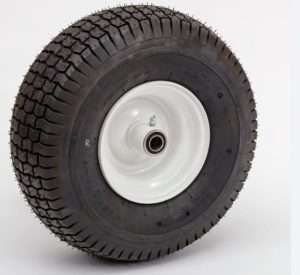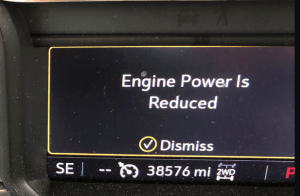Tire Rotation “A Step-by-Step Guide for your vehicle”
Tire rotation is an essential part of car maintenance. It is important to rotate your tires regularly in order to ensure good traction, extend the life of your tires, and ensure that the wear on your tires is even.
This guide will provide you with information about how often you should rotate your tires, what type of rotation pattern you should use, and how to complete the rotation yourself. With this information, you can keep your tires in top condition and maximize their lifespan.
What tire rotation is and why it’s important
Tire rotation is the process of moving the tires from one position on the vehicle to another. The goal of tire rotation is to ensure that all of the tires wear evenly, which can help to prolong the life of the tires and improve the safety of the vehicle.
When a vehicle is driven, the front tires tend to wear more quickly than the rear tires. This is because the front tires are responsible for steering and braking, which puts more stress on them.
By rotating the tires, the front tires are moved to the back and the back tires are moved to the front, which can help to distribute the wear more evenly across all four tires.
Regular tire rotation can also help to improve the handling and stability of a vehicle. Uneven tire wear can cause the vehicle to pull to one side or vibrate, which can make it more difficult to control.
By rotating the tires, you can help to ensure that all of the tires have similar levels of tread depth and pressure, which can improve the overall performance of the vehicle.
In addition, rotating tires can help to extend the life of the tires, which can save you money in the long run.
When the tires wear unevenly, it can cause the tires to wear out more quickly and need to be replaced sooner than they would have otherwise. By rotating the tires, you can help to prolong their life and save money in the long run.
In summary, tire rotation is an important aspect of vehicle maintenance that helps to prolong the life of the tires and improve the safety of the vehicle by ensuring even wear of the tires and improving the handling and stability of the vehicle.
Different types of tire rotation
There are several types of a tire rotation, each with its own unique set of benefits and drawbacks. The most common types of tire rotation include:
Front-to-Rear:
In this type of rotation, the front tires are moved to the back of the vehicle and the rear tires are moved to the front. This is the most basic type of tire rotation and is often recommended for vehicles with front-wheel drive.
This rotation can help to distribute the wear more evenly across all four tires, but it may not be as effective as other types of rotation in correcting uneven wear.
Rear-to-Front:
This type of rotation is the opposite of front-to-rear, the rear tires are moved to the front and the front tires are moved to the back. This rotation is often recommended for vehicles with rear-wheel drive.
This type of rotation can also help to distribute the wear more evenly across all four tires but may not be as effective as other types of rotation in correcting uneven wear.
Cross-rotation:
This type of rotation involves moving the tires diagonally across the vehicle. The front-left tire is moved to the back-right position, the front-right tire is moved to the back-left position, the back-left tire is moved to the front-right position, and the back-right tire is moved to the front-left position.
This type of rotation can be more effective in correcting uneven tire wear, as it can help to balance the wear across all four tires. This type of rotation is often recommended for vehicles with all-wheel drive or 4-wheel drive.
Each type of rotation has its own set of benefits and drawbacks, and the best choice will depend on your vehicle, driving habits, and the level of uneven wear. It is important to consult the vehicle’s owner’s manual, and the vehicle’s tire specifications or to consult a professional mechanic to determine the best type of rotation for your vehicle.
Pros and Cons of each tire rotation type
Front-to-Rear
This type of tire rotation is the most basic type and it is often recommended for vehicles with front-wheel drive.
The main benefit of front-to-rear rotation is that it can help to distribute the wear more evenly across all four tires, which can help to prolong the life of the tires. Additionally, it is a simple and easy rotation to perform.
However, it may not be as effective as other types of rotation in correcting uneven wear, especially if the vehicle has a significant wear difference between the front and rear tires.
Rear-to-Front:
This type of rotation is the opposite of front-to-rear, and it is often recommended for vehicles with rear-wheel drive.
The main benefit of rear-to-front rotation is that it can also help to distribute the wear more evenly across all four tires.
However, it may not be as effective as other types of rotation in correcting uneven wear, especially if the vehicle has a significant wear difference between the front and rear tires.
Cross-rotation:
This type of rotation involves moving the tires diagonally across the vehicle. It is often recommended for vehicles with all-wheel drive or 4-wheel drive.
The main benefit of cross-rotation is that it can be more effective in correcting uneven tire wear, as it can help to balance the wear across all four tires. This rotation can also help to maintain the balance of the vehicle and improve its stability of the vehicle.
However, cross-rotation may be more complex and time-consuming to perform than the other types of rotation.
It is important to note that the choice of the rotation type should be based on the vehicle’s owner manual, the vehicle’s tire specifications, and the level of uneven wear. It is always recommended to consult a professional mechanic to determine the best type of rotation for your vehicle.
Recommended intervals for tire rotation
The recommended intervals for tire rotation vary depending on the type of vehicle and driving habits.
Typically, it is recommended to rotate your tires every 6,000 miles or every other oil change. However, this can vary depending on the vehicle and the type of tires that are being used.
The vehicle’s owner manual is the best source of information on the recommended intervals for tire rotation for your specific vehicle.
It will also provide any other additional recommendations for tire maintenance, such as tire pressure, alignment, and balance.
Additionally, it’s also important to check for uneven tire wear, as this can be a sign that it’s time for a rotation. If you notice that one or more tires are wearing more quickly than the others, it’s a good idea to have them rotated as soon as possible.
It is also important to note that if you drive your vehicle mostly in the city, or in stop-and-go traffic, the tires will wear out more quickly than if you drive mostly on the highway.
In this case, you may need to rotate your tires more frequently. If you drive your vehicle in extreme conditions, such as in heavy rain, snow, or on rough roads, you may need to rotate your tires more frequently as well.
In summary, the recommended intervals for tire rotation vary depending on the type of vehicle and driving habits. It is recommended to rotate your tires every 6,000 miles or every other oil change.
But it is always best to consult the vehicle’s owner manual and to check for uneven tire wear regularly, in order to determine the best intervals for tire rotation.
How to check for uneven tire wear and why it’s a sign that it’s time for a rotation
Checking for uneven tire wear is an important step in maintaining the safety and longevity of your tires. Uneven tire wear can be caused by a variety of factors, such as improper tire inflation, misalignment, or a worn suspension component.
To check for uneven tire wear, you will need to visually inspect each tire for signs of wear. Look for areas of the tire that are worn more than others, or for areas of the tire that have less tread than the rest of the tire.
You can also use the “penny test” which is a simple way to check the tread depth of a tire. To do this, take a penny and insert it into the tread of the tire with Lincoln’s head facing down.
If you can see the top of Lincoln’s head, the tire’s tread depth is less than 2/32 of an inch and it’s time to replace the tire.
Another way to check for uneven tire wear is by measuring the tire’s tread depth with a tread depth gauge. This will give you an accurate measurement of the tread depth on each tire, which can help you to determine if one or more tires are wearing more quickly than the others.
If you notice that one or more tires are wearing more quickly than the others, it’s a good idea to have them rotated as soon as possible. Uneven tire wear can cause the vehicle to pull to one side or vibrate, which can make it more difficult to control.
It can also cause the tires to wear out more quickly and need to be replaced sooner than they would have otherwise. By rotating the tires, you can help to distribute the wear more evenly across all four tires, which can help to prolong
Step-by-step instructions for how to rotate tires on a vehicle
- First, make sure that the vehicle is parked on a level surface, and that the emergency brake is engaged.
- Use a jack to lift the vehicle, and place jack stands under the vehicle to support it. Make sure the vehicle is stable and secure before you begin working on it.
- Remove the lug nuts from the tires using a lug wrench. Once the lug nuts are removed, you can carefully remove the tires from the vehicle.
- Depending on the type of rotation you’re doing, move the tires to their new positions.
- For front-to-rear rotation: Move the front tires to the back of the vehicle and the rear tires to the front.
- For rear-to-front rotation: Move the rear tires to the front of the vehicle and the front tires to the back.
- For cross-rotation: Move the front-left tire to the back-right position, the front-right tire to the back-left position, the back-left tire to the front-right position, and the back-right tire to the front-left position.
- Place the tires back on the vehicle and secure them with the lug nuts. Tighten the lug nuts by hand, then use the lug wrench to tighten them further.
- Lower the vehicle off the jack stands, and remove them from under the vehicle.
- Check the tire pressure on all four
If you want to know the costs of tire rotation you can read our another article called Tire rotation Costs
Safety precautions and tips for properly performing a tire rotation
- Always make sure that the vehicle is parked on a level surface and that the emergency brake is engaged before lifting the vehicle.
- Use the appropriate equipment such as jack stands, wheel chocks, and a jack to lift the vehicle safely.
- Always use a lug wrench to remove the lug nuts. Avoid using power tools such as impact wrenches, as they can damage the lug nuts.
- Be sure to properly support the vehicle with jack stands before working on it. Never rely on the jack alone to support the vehicle.
- Always use caution when working around the vehicle, as it can be unstable when it is lifted.
- Keep your hands and feet clear of moving parts while rotating the tires.
- Double-check that the lug nuts are tightened securely before lowering the vehicle back to the ground.
- After lowering the vehicle, take a test drive to ensure that the vehicle handles properly and that there are no vibrations or pulling.
- Make sure to check the air pressure in the tires and adjust it as needed.
- Always consult the vehicle’s owner manual for specific instructions and recommendations for tire rotation.
By following these safety precautions and tips, you can ensure that the tire rotation is performed properly and that the vehicle remains safe to drive.
It’s also important to remember that if you are not comfortable performing the tire rotation yourself, or you have any doubts, it’s always best to consult a professional mechanic.
Conclusion
Importance of tire rotation and the benefits it provides
Tire rotation is an important part of maintaining the safety and longevity of your vehicle’s tires. It is the process of moving the tires from one position on the vehicle to another, in order to distribute the wear more evenly across all four tires.
By regularly rotating your tires, you can help to ensure that they wear out at the same rate, which can help to prolong the life of the tires.
There are several benefits to rotating your tires, including:
Prolonging the life of the tires:
By rotating the tires, you can help to distribute the wear more evenly, which can help to prolong the life of the tires.
Improving vehicle handling:
Uneven tire wear can cause the vehicle to pull to one side or vibrate, which can make it more difficult to control. Rotating the tires can help to improve the handling of the vehicle.
Enhancing fuel efficiency:
When the tires are worn unevenly, it can cause the vehicle to work harder, which can result in decreased fuel efficiency. Rotating the tires can help to improve the fuel efficiency of the vehicle.
Enhancing safety:
Worn tires can be dangerous, as they can make it more difficult to control the vehicle, especially in wet or slippery conditions. Rotating the tires can help to ensure that the tires have good traction and are safe to drive on.
Saving money:
Regularly rotating the tires can help to prolong the life of the tires and save you money in the long run.
Tire rotation is a crucial aspect of tire maintenance and vehicle safety. It is important to check the owner manual and consult a professional if you have any doubts, and to rotate the tires at the recommended intervals to ensure they perform at their best, increase their lifespan and keep you safe on the road.
Lastly, safety is one of the most important reasons to rotate your tires regularly. Worn tires can be dangerous, as they can make it more difficult to control the vehicle, especially in wet or slippery conditions.
FAQs about Tire Rotation
Q: What is tire rotation and why is it important?
A: Tire rotation is the process of moving the tires of a vehicle from one position to another, to ensure even wear on all tires. It is important because it helps to prolong the life of the tires and improve the overall performance and safety of the vehicle.
Q: How often should I rotate my tires?
A: It is recommended that you rotate your tires every 6,000 to 8,000 miles or every six months, whichever comes first. However, it is best to consult the owner’s manual of your vehicle for the manufacturer’s recommendations.
Q: Can I rotate my tires myself or should I take it to a professional?
A: You can rotate your tires yourself if you have the knowledge and tools to do so safely. However, if you are unsure about how to properly rotate your tires or lack the necessary equipment, it is best to take it to a professional.
Q: Are there different types of tire rotation patterns?
A: Yes, there are several different tire rotation patterns that can be used, depending on the type of vehicle and the number of tires it has. Some common rotation patterns include front-to-rear, rear-to-front, and cross-rotation.
Q: Will rotating my tires improve my gas mileage?
A: Regularly rotating your tires can help to improve your gas mileage by ensuring that all tires are wearing evenly. When tires are worn unevenly, they can cause your vehicle to work harder, which can result in decreased gas mileage.



